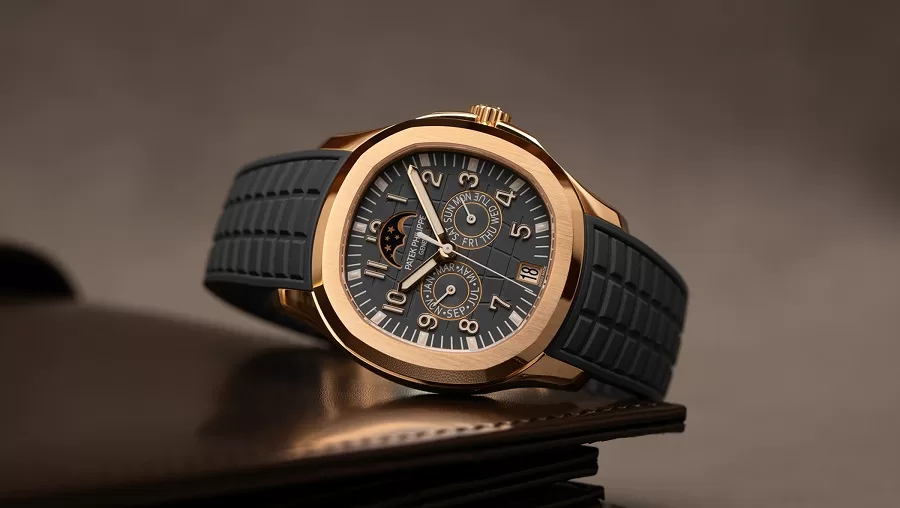Lifestyle
The Timeless Appeal of Watches: Why Mechanical and Vintage Timepieces Are Making a Comeback

- The watch he wore to his best friend’s wedding was already a matter of discussion among the tech gossip and entrepreneurs: an approximately $900,000 one-of-its-kind, expressively handcrafted Greubel Forsey designed exclusively by hand in the middle of the Swiss mountains.
- In the time after the luxury phase, the watch in the special sense that generation people want is a move towards less, more useful timepieces such as that by Casio, making the likes of such a lower-end and original brand very in demand.
- New-history, newly modern/timeless forms spin a picture of marketing as examples of sustainability or handcrafting emerging as decision criteria are decided on personal trigger events of wristwatch consumers.
An unexpected twist was, however, the dressing of computer geek Mark Zuckerberg; the magnate took the spotlight once more, not due to his advance on digits, but because of his latest acquisition approximately $900,000 Greubel Forsey timepiece. Composed of white gold, and limited to only three articles each year, this wonderful Swiss timepiece joins an amazing collection that already includes a $1.2 million Patek Philippe and the thinnest watch in the world. While such high-end watches may seem beyond the common man’s reach, Zuckerberg’s acquisition signals a much broader cultural shift than the comeback of mechanical and vintage watches. Wristwatches, which are sometimes classified as relics of the past, have been taken up again, particularly among the people born after 1997 (classified into a new generation called Generation Z and also said by them). Despite the digital world where one grew up and where wristwatches may have lost their position due to smartphones that cover time adjustments, these young ones still are fascinated with the time-honoured beauty and workmanship of the analogue clocks process through timepieces, especially tangible ones. Said the spokesman of Depop, “With so much in the air, we see a swing to retro and more simple lines that create a great deal of nostalgia and familiarity.” As a matter of fact, searches made on Depop had shown 34-percent growth in watches for the last month, indicating the increased obsessions for watches on mechanical or historical developments.
Wristwatches Are the New Status Symbol.
Some of the reactions might be surprising because of the rising popularity of smartwatches. When Apple launched its smartwatch back in 2015, it looked like the end-practice of wearing wristwatches. But if one looks at it after over a decade, what happened was that smartwatch sales dropped as buyers returned to the classical archetypes. Watch junkies have started getting on to TikTok and other social media sites, showing off everything from swanky Rolexes to small and cheap Casio models. Largely, this nostalgia factor has taken over Swatch and the colourful plastic designs they brought to Swiss watch markets in the 1980s. It joined up with luxury companies such as Omega and saw growth, with limited releases getting sold out in minutes and commanding immense prices on resale platforms.
A Fashion Statement, Not Just a Timepiece
At present a watch is more for making fashion. If kids like these designs and feel like wearing them on a red carpet, it means, why not, wristwatches are going to continue gaining importance with time. For example, at the Golden Globes, Nicole Kidman wore a 1920s classic Omega watch, studded with diamonds; Michelle Yeoh, on the other hand, came wearing a modern Richard Mille version. Paul Mescal appeared in a Cartier Tank watch, a true man of no fashion. Consider this to ascertain how wristwatches will have relevance for every era to come.
New Generation of Collectors in Watches
Generation Z has now been broken up into buyers younger than 35? that have increasingly been buying Swiss-made timepieces from renowned brands to ones with remarkable sustainability features. Eric Macaire, vice president of purchasing worldwide for timepieces at Switzerland Group, believes that younger watch consumers are more inclined towards their Swiss buys than people of their age often entering their first or second purchase. Increased interest in horology from Generation Z suggests that the wristwatch resurgence is here to stay. It’s a new cultural movement that mixes heritage with fresh sensibilities.
Today’s wristwatch has once more come of age; whether it is a $60 Casio or a six-figure Rolex, it is now about taste, workmanship, and personality. In these digital times, a watch has acquired real tactile pleasure in the act of winding them up and in watching the delicate machinations of the mechanism. As Zuckerberg’s recent acquisition has shown, the wristwatch means more than just a time-telling instrument. It’s more than a memory and more than an accessory.
The Humble Journey Watches.
Among the elite, modest humbleness is increasingly gaining preference owing to the most modest timepieces. Even those with high-end tastes among the élite are turning to the simplest of humble items that, for some reason, expensive items are turning off most people. Casio, from Japan, has been the best-selling watch with a low cost starting from just £6; equally surprising is the latest boom for it. The consumer trend includes various celebrities ordinary computer users and even artists like Bill Gates and Tyler, the Creator. According to Warren Halliwell, the content and campaign manager of Casio, interest in the brand has surged a lot over the past three years.
Everyone can notice this change, especially those belonging to Generation Z, who behave as well as earn like the rich, and would rather wear their hearts on their sleeves. Brand and origin have taken a backseat with the current under-30-year-olds looking more for honesty than anything else. For it is now, like, a specific symbol: Time is money, and I use a watch as an artefact to manifest what I value.
The Timeless Draw of Mechanical Watches
What, then, is the magic of mechanical and vintage watches that lures towards its pursuit? Eric Macaire drops a few pearls of wisdom on this matter loaning it the idiosyncratic perspective of an observer. “I think that the revival of it is a mix of reasons. First is the respect for craftsmanship and heritage. Yes, because in a world filled with disposable mass-produced technology, even the Gen Xers and increasingly the Gen Yers have been attracted to the art and history through the timepiece that is moved by gears and escapements,” Macaire added. “Secondly, there is a cultural thrust towards nostalgia and authenticity. Examples are on TikTok and Depop where everything from the latest vintage Omega to old Casio Retro is featured.”
Consumer behaviorists embrace these ultra-high-profile endorsements such as a recent support from Zuckerberg. “When someone like Zuckerberg was to invest in a Greubel Forsey or a Patek Philippe, it sort of just underscores the fact that true craftsmanship and exclusivity carry a lot of value,” Macaire stated. Being able to cop what wealthier individuals could, if not necessarily within the limits of such top-end items, leads them to seek out more affordable choices of the same high quality and design.
A Timepiece for Every Generation
Traditional wristwatches are back – so clearly, our attitudes towards money, status or self-expression must be changing. Study shows that as people embrace “the lesser, the more” philosophy, the popularity of simple watches like Casio and Swatch is about to grow. Mechanical watches may have their special links to the past but also reach the modern contemporary spirit, and this is appealing to younger buyers who usually value authenticity and sustainability.
The world of wristwatches can fulfil the veteran collector, the virgin buyer, and the cynosure of heritage, handwork, and possession, which show absolutely no sign of slowing down.



















































